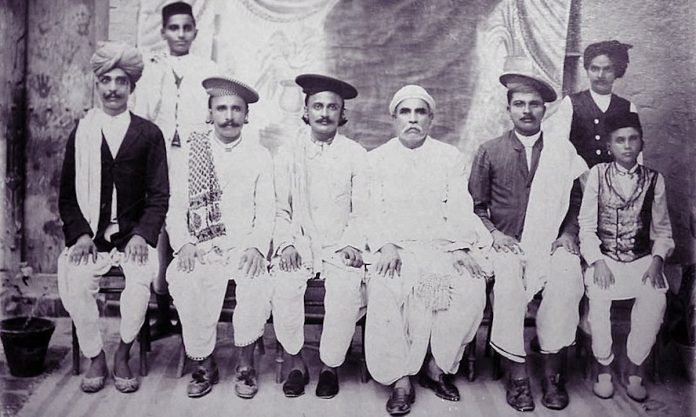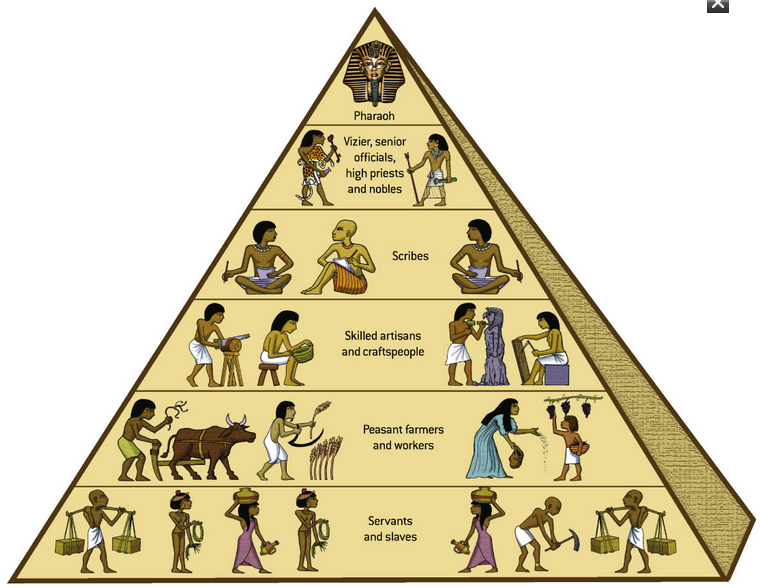

Many scholars and writers feel that Sindhi society is a relatively caste free society. For Indian Sindhis and the Sindhi diaspora, hierarchy is mostly focused on class and not caste; this makes the claim of Sindhis being free of caste more plausible.
By Shiksha K Sharma
One of my earliest memories is having people of my community, much older than me, touch my feet for my blessings. As an instinctive, knee-jerk response, I always jumped back, surprised each time it happened. Why was this happening to me? TV serials were a large part of my growing-up years, thanks to my mother and grandmother. In them, I saw younger people touching the feet of their elders. It seemed terribly inappropriate for a ten-year-old to have her feet touched by women almost the age of her own grandmother! “But you are the daughter of Brahmans,” the aunties explained when they saw the shock on my face, and my grandmother nodded her confirmation. As the years passed, I found it interesting when people claimed that Sindhi society was free of caste – because I have always felt my life marked by caste. Even my surname, ‘Sharma’, my parents told me, was a caste-marker which every Brahman has. Our real family surname, Shingrani, was for only us to know.
Many scholars and writers feel that Sindhi society is a relatively caste free society. In Sindh: Stories from a Vanished Homeland, Saaz Aggarwal notes: “Sindh never had a rigid caste system and was never manipulated by Brahmans as many other Hindu societies in India were. In modern times, Hindus leave their rituals to the Brahman; their importance is of function but not prestige. Among Sindhi Hindus, this was always the case.” (Aggarwal 2012) While that is true, it is also true that the mere existence of Brahmans and Vanyas (‘Vaishyas’, in more common terms) as caste groups in Sindhi society indicate that frameworks that revolve around caste and its practice in other parts of India may also exist here. For example, Brahmans are generally addressed as ‘Maharaj’, originally pronounced ‘Meraj’ in Sindhi. Non-Brahman, upper-caste Hindus, generally engaged in business activities, are called Vanyas; Muslims who are financially better off than the majority are called ‘Ashrafiyas’. Our daily use of language betrays our claim of being a caste-free society.
It is not uncommon for an upper-caste Sindhi child who refuses to have a bath to hear “Don’t be a bhangi” or “Chi, Chuhro” which on the surface are understood to mean that the child shouldn’t act ‘dirty’ or that they smell because they aren’t having a bath. It becomes more complicated when one realizes that these terms are derogatory and refer to specific caste groups that are labelled dirty and, by association, untouchable. Certain practices, like keeping separate vessels for domestic cleaning staff, mirrors caste behavior from the rest of the subcontinent and reinforces the notion that some people are inherently ‘pure’, and others are inherently unclean or ‘impure’. These instances open up the need to know and learn more about the true nature of caste and its placement within the Sindhi community.
For Indian Sindhis and the Sindhi diaspora, hierarchy is mostly focused on class and not caste; this makes the claim of Sindhis being free of caste more plausible. Our social distinctions are also often related to places of origin or occupations, such as Hyderabadi, Shikarpuri, Sahiti, or sects or ‘zaats’ like Amil, Bhaiband or Sindhworki – So one could be a Hyderabadi Brahman or a Khudabadi Amil.
In this essay, I will explore different caste identities and their unique behaviors or characteristics. My information is based on a series of interviews I conducted with Brahmans and non-Brahman Sindhi Hindus in India. It is supplemented by a few articles about the Dalit experience in Sindh, which the Sindhis in India and around the world do not have ready access to.
The Brahmans
The Brahmans of Sindh are subdivided into two categories, with Pokharna Brahmans generally considered superior to the Saraswat Brahmans. There are two primary differences. Pokharna Brahmans, unlike Saraswat Brahmans, do not eat food cooked by anybody other than themselves, and they do not eat onion or garlic. (Saraswat Brahmans do eat onion and garlic, other than on certain festivals such as Navratri, shradh, gyaras twice a month, and other such occasions which seem quite frequent to me!) Secondly, Pokharna Brahmans perform all the rituals of a traditional Hindu household but do not perform any ritual linked to someone’s death including the saar (funeral), chautho (the day of mourning four days after a death) or bhog on the twelfth day after a death. However, a majority of Sindhi Brahmans are Saraswat Brahmans, tracing their origins from the river Saraswati. Ancient lore says that Raja Dahir, the last Hindu king of Sindh, had abolished caste and that is why there were no Brahmans in Sindh. Another story narrates that Muslim invaders killed all the Brahmans of Sindh, so Brahmans from the banks of Saraswati were invited by the Hindus to perform their ritual duties.
As a group, the Brahmans are fairly endogamous, meaning that they prefer to marry within their own caste groups. It is looked down upon, when a Brahman girl or boy marries a non-Brahman, even if the non-Brahman is a Sindhi. The shrinking numbers of Sindhi Brahmans and families over the years after Partition have led to marriages within family groups. However, many educated Brahman children are choosing to marry outside their caste as well as community. Increasingly, many Brahman boys are also abandoning the traditional occupations of their forefathers in favor of corporate jobs and better educational opportunities. Girls also tend to favor boys who are educated and employed in modern work settings.
Sindhi Brahmans generally do not discriminate along caste or class lines, and go to any house to which they are invited. They adopt the surname ‘Sharma’ as a general indicator of their caste status, while some may choose to retain their original surnames.
The Brahmans of Sindh lived under Islamic rule for centuries as a minority religious community. In those circumstances, it was wise to find strength in numbers by assimilating with the rest of the Hindu community. Perhaps that is the reason that Brahmans did not hold the same position of power in the Sindhi community as they do in other communities. An atmosphere of Sufism and egalitarian beliefs in many sects also ensured the reduction of hierarchy.

Vanyas
The terms ‘Vanya’ and ‘Jajman’ are used, particularly by Brahmans and Sindhi Muslims to refer to upper caste, Hindu Sindhi businesspeople. However, within the community, they generally identify themselves as Hyderabadis, Shikarpuris, Sahitis and so on, referring to their place of origin. As a caste group, they form the majority of the community in India.
In terms of sect or zaat, the two primary divisions in this group are between Amils and Bhaibands. The Amils were the educated class, and worked as teachers, lawyers, doctors, and bureaucrats. The Bhaibands were traders, shopkeepers and businessmen. Sindhworkis were Bhaibands who traded in material manufactured in Sindh, and took the opportunity offered by British rule to conduct their business in ports around the world. They formed a worldwide network of Sindhis. Chhaprus were communities that stayed in the mountain regions of Sindh but later settled in Karachi. Bhatias were considered direct descendants of Shri Krishna, a Hindu deity, and were strictly vegetarian – some not even consuming onion or garlic. Masands were Sikh by faith and were introduced to Sikhism by the fourth Sikh guru, Guru Ramdas. Thakurs were the descendants of Lord Jhulelal, the Sindhi deity, and they became the Sindhi Brahmans. Bhagnaris were the spice, dry fruits and wine merchants; they belonged to Baluchistan. Lohanas were the Kshatriyas who were originally from Lahore and eventually settled in Kachchh, and they were a mercantile people (Bijani 2013).
These different sects within the community often compete to establish superiority of culture and language. Hyderabadis and Shikarpuris, for example, speak Sindhi in different ways. Although Hyderabadi Sindhi was formalized as standard Sindhi by the British, there is always a conflict about the right way to say things. The educated class looks down upon the business class, and vice-versa.
Marriage is generally arranged within the sects. For example, Shikarpuris prefer to marry other Shikarpuris, since their practices, language and rituals are the same. It is still uncommon, even for such a small community, to marry across sects. Marriages outside the community are however quite commonplace, with young people increasingly taking more control over whom they choose to marry.
Dalits
While a majority of the Sindhi Hindus living in urban areas managed to make the passage from the newly-formed Pakistan into India and other parts of the world, the Hindus that were left behind largely consisted of Dalits or scheduled castes. With neither the means to pay for their passage to another country, nor anticipating better treatment as Dalits in the truncated India, they stayed on in Pakistan, perhaps hoping that a Muslim nation might do away with the practice of caste. However, as Dalit leaders who supported the Muslim league such as Jogendra Nath Mandal from Bengal grew disillusioned with the Pakistani establishment and left, the Dalits became even more vulnerable. They faced double discrimination, for belonging to the minority religious group, and also for being born Dalit.
Their identity and existence is often masked by their class status, which erases their discrimination based on social hierarchies determined at birth. It is also erased by grouping them together with caste Hindus as one homogenous group, since it takes away their separate identity, struggles as well as their political representation. While generations of Sindhis born outside of Sindh may have never encountered Dalits belonging to their land, their existence is a reality. Large groups work as bonded labour in rural parts of Sindh, completely denied any political or human rights, living in abject poverty at the mercy of their waderos – landlords.
Muslim communities too still struggle with the problem of caste. “Though Islam prohibits discrimination on the basis of caste, yet it exists within the society and several Muslim castes are considered lower than that of other castes. For example, Mallah and Machhi, two castes of fishing communities are considered lower and are discriminated [against] in different walks of life. Observations and interviews with community people suggest that in many cases discrimination goes to the extent of untouchability” (Shah, 2007).
It is safe to assume that although generations of the Sindhi diaspora around the world after Partition have a distant view of caste practices and experiences surrounding caste, caste behaviors and caste groups are still a reality in the community. In a rapidly modernizing world, Brahmans on their part are increasingly abandoning their traditional roles and assimilating with the general population, while also marrying outside the community, causing it to shrink further. That does not deny the social benefits of the caste names adopted by the group.
Lastly, it may be noted that the Dalits of Sindh, oppressed to the point of being invisible, have now begun receiving attention. Although they still live in dire circumstances, a beginning has been made.
______________________
About the Author